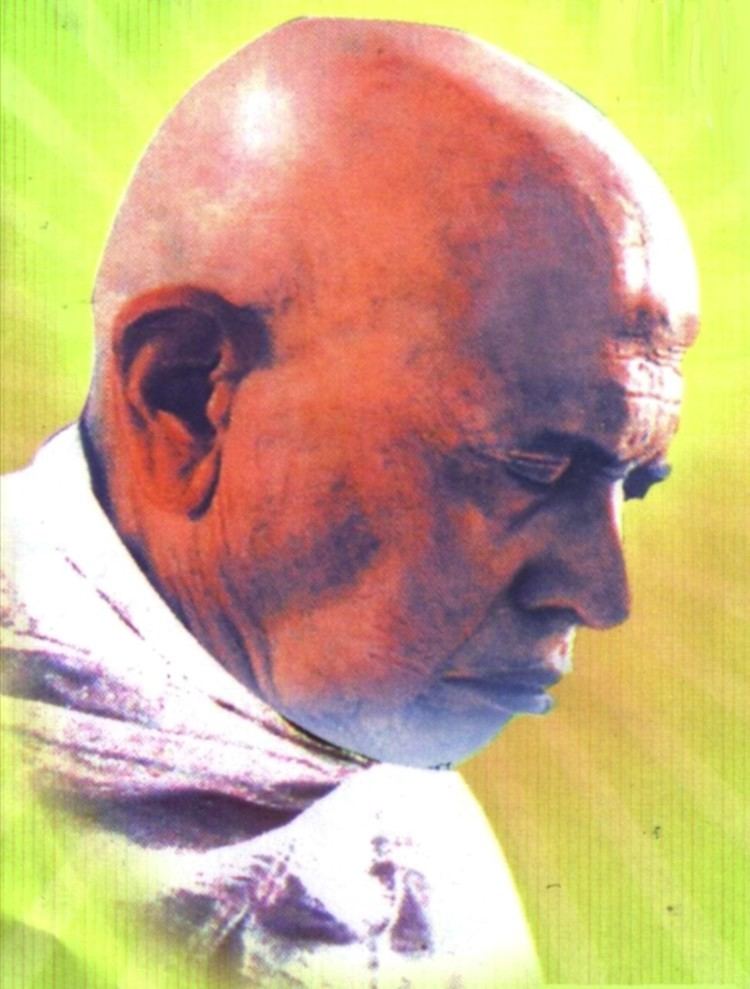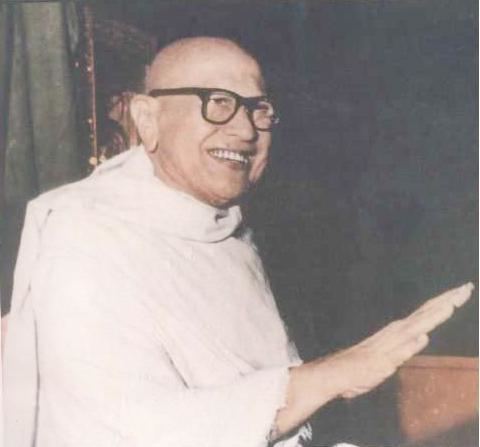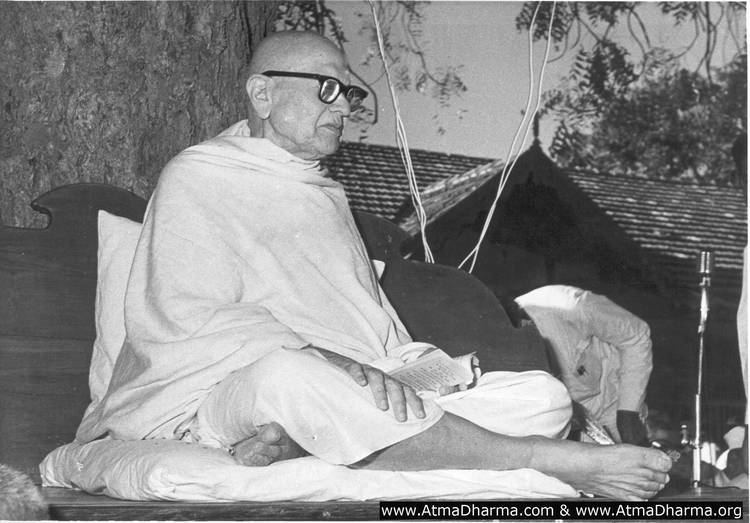Name (official) Kanji Swami | Rank Acharya Name Kanji Swami | |
 | ||
Parents Ujamba & Motichand Bhai Works Jain scholar, philosopher and spiritual leader | ||
28 November Kanji Swami mystical teacher of Jainism Songadh@vasant teraiya
Kanji Swami (Gujarati:કાનજીસ્વામી) (1890–1980) was a mystical teacher of Jainism. He influenced the practice of svadhyaya among the Jain laity.
Contents
- 28 November Kanji Swami mystical teacher of Jainism Songadhvasant teraiya
- Pujya gurudev shree kanji swami jivan charitra part 2 7
- Early years
- Renunciation and later life
- Philosophy
- Religious establishment
- References

He was born into the Sthanakavasi sect and was initiated as a Sthanakavasi monastic. He was deeply influenced by the works of Pandit Todarmal and by the Samayasara of Kundakunda in 1932. He later used these teachings to formulate his philosophy. He was given the title of 'Kohinoor of Kathiwad' by people who were mesmerised by his religious preachings and philosophy.

Pujya gurudev shree kanji swami jivan charitra part 2 7
Early years

Kanji Swami was born in Umrala, a small village in the Kathiawar region of Gujarat, in 1890 AD to a Sthanakavasi family. Although an able pupil in school, he always had an intuition that the wordly teachings was not something that he was looking out for. His mother died when he was thirteen and he lost his father at the age of seventeen. After this, he started looking after his father's shop. He used the frequent periods of lull in the shop in reading various books on religion and spirituality. Turning down the proposals of marriage, he confided in his brother that he wanted to remain celibate and take renunciation.
Renunciation and later life
Kanji Swami became a Sthanakavasi monastic in 1913 under Hirachanda. During the ceremony, while riding on an elephant, he inauspiciously tore his robe, which was later believed to be an ill omen for his monastic career. He embarked upon a rigorous study of the Svetambara scriptures and finished a detailed study of the forty-five Jain Agamas Being a believer in self effort for achieving emancipation, he quickly became a learned and famous monk and, backed by his seventeen renditions of the Bhagavati Sutra. He was known as "Koh-i-Noor of Kathiawar".
During 1921, he read Samayasara, which influenced him greatly. He also studied writings of Pandit Todarmal and Shrimad Rajchandra. During his discourses he began to incorporate the ideas picked from these studies and began to lead a kind of double life, nominally a Sthanakavasi monastic but referring to Digambara texts.
His assertions that "vows, giving and fasting were ultimately worthless if performed without any understanding of the soul" did not endear him to the Sthanakavasi community. He left Sthanakavasi monastic life and proclaimed himself a celibate Digambara lay scholar at Songadh in Gujarat in 1934. His lectures were recorded on tapes and have been published. His emphasis was on nishcaya naya, the higher level of truth, over vyavahara naya, ordinary life. Kanji Swami died on 28 November 1980 at Mumbai.
Philosophy
He directed his teachings to the subject of the soul and to Kundakunda's representation of it as the one eternal and unconditional entity. Kanji Swami's insistence on the primacy of the absolute level of truth over the relative one of ordinary life is obvious from his frequent comment: "Please try to understand. No soul, with or without knowledge, has the slightest ability to move even a particle. In such circumstances, how can it do anything to the human body, or to any other thing for that matter?"
For Kanji, Samyak darshana "right faith" was a prerequisite to any meaningful progress upon the spiritual path. He was convinced that the Ratnatraya – right vision or view (Samyak Darshana), right knowledge (Samyak Gyana) and right conduct (Samyak Charitra) – constitutes the path to liberation. It could only function effectively on the basis of a prior experience of the soul, and considered the various rituals and merit-making practices as subordinate. In an interview in 1977 he denied being hostile to the traditional Jain monasticism and regarded monastics as personifying the fundamental principles of Jainism. However, he also pointed out that taking up formal initiation and behavioural practices, like the abandonment of clothes of Digambara monks, and of other possessions, could not make an individual a true monastic unless he had abandoned internal possessions as well.
Religious establishment
The Digambara Jaina Svadhyaya Mandira was built in 1937. It houses Samayasara in the main temple and the words of Kundakunda's five main treatises have been engraved on its walls. A temple dedicated to Shrimandhara Swami was consecrated in 1941. Kanji Swami travelled throughout India where he gave discourses and consecrated many temples. Songadh is major centre.
Kanji Swami has many followers in the Jain diaspora. They generally regard themselves simply as Digambara Jains following the tradition of Kundakunda and Pandit Todarmal.
